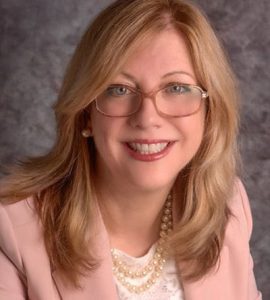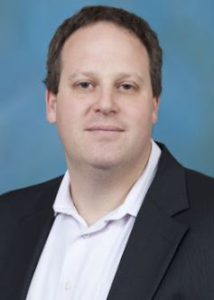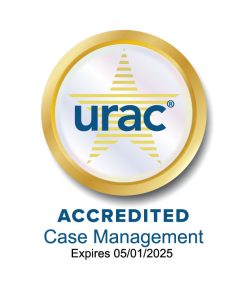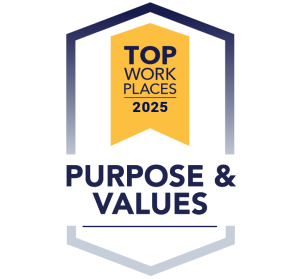 September is National Sickle Cell Awareness Month, designated by Congress to help focus attention on the need for research and treatment of sickle cell disease. We recently sat down with Karen Twigg, Vice President, Population Health, Community Health at The Coordinating Center and Dr. Jason Fixler, attending physician in the Pediatric Hematology/Oncology Program at the Herman and Walter Samuelson Children’s Hospital at Sinai, a part of the LifeBridge Health System, to learn more about sickle cell disease.
September is National Sickle Cell Awareness Month, designated by Congress to help focus attention on the need for research and treatment of sickle cell disease. We recently sat down with Karen Twigg, Vice President, Population Health, Community Health at The Coordinating Center and Dr. Jason Fixler, attending physician in the Pediatric Hematology/Oncology Program at the Herman and Walter Samuelson Children’s Hospital at Sinai, a part of the LifeBridge Health System, to learn more about sickle cell disease.
What is Sickle Cell Disease?
Advocacy for people with complex medical needs and disabilities is at the core of The Coordinating Center’s mission. It is inherently important for us to increase community awareness of diseases and disorders that are often not given media attention. This is especially true in September, which is Sickle Cell Disease (SCD) month, as it gives us an opportunity to shine a light on a disease that is often pushed into the shadows. According to the National Health Institute (NIH), SCD affects more than 100,000 people in the United States and 20 million people worldwide… and most of those with SCD are of African-descent.
SCD is a group of red blood cell disorders affecting hemoglobin, the protein in your body that carries oxygen to your cells, which can cause symptoms ranging from fatigue to severe pain. People suffering from SCD are born with the disorder (inherited) but usually do not show symptoms until they are about nine to twelve months old. Individuals with SCD have red blood cells that are rigid and sickle-shaped, like a crescent moon, rather than being flexible and disc-shaped, like a full moon. A round shape allows red blood cells to move easily through blood vessels, while a sickle shape causes the red blood cells to stick to each other causing clumping that can block the blood flow through the body. Read more>>
What treatments are available for SCD?
The standard treatments for SCD include medications that prevent red blood cell sickling, pain crises, and other severe complications. For a disease that affects so many people, there are relatively few disease-specific medications available to treat or prevent SCD’s impact on the body. However, there are diagnostic tests that can be used to help with the management of SCD. As previously noted, SCD can impact blood flow to the body’s organs – including the brain. Transcranial doppler (TCD) ultrasound is one example of an important diagnostic test that can be used to avoid one of the most severe complications of SCD. TCD is used to predict the risk of stroke in children and adolescents with SCD. This simple, 15-minute, non-invasive test, which measures the speed of an individual’s blood flow in their brain, can preserve a child’s quality of living – or save their life.
Although there have been many recent breakthroughs in medications and cures for sickle cell disease, this has all happened in the past 10-20 years. Historically, research into the development of new treatments for this disease has been grossly underfunded, as other diseases have caught the media’s attention and led to their being the focus of funding and fundraising. Some of the newer therapies to treat SCD include gene editing and the use of a chemotherapy medication (agent), Hydroxyurea. This agent has been the most successful addition to the battle against SCD and has been used for over 30 years. Although there have been newer medications recently introduced to treat SCD, they have had limited ability to change the course of the disease.
 Interview with Dr. Jason Fixler:
Interview with Dr. Jason Fixler:
According to Dr. Jason Fixler, attending physician in the Pediatric Hematology/Oncology Program at the Herman and Walter Samuelson Children’s Hospital at Sinai, gene editing is the most exciting innovation to affect SCD. He explained the process of gene editing:
“We take out the patients’ stem cells and then either insert the normal hemoglobin beta gene or make the cells produce more hemoglobin F (fetal hemoglobin). Both result in eliminating sickling and the complications of sickle cell disease such as pain, stroke, and acute chest syndrome, which is sickling in the lungs that can result in respiratory distress or even death.” This mode of treatment is still in the experimental stage.
One of the most significant challenges that an individual with SCD and their family may face is the management of a sickle crisis. Developing a crisis management plan with a medical provider knowledgeable about SCD is essential to proactively managing a sickle cell crisis – especially a pain crisis. Communication of the crisis management plan to hospitals and emergency room staff can help people with SCD avoid the mislabeling of a pain crisis as an addictive or behavioral health issue. As a pediatric hematologist for over twenty years, Dr. Fixler has had many opportunities to teach residents about the numerous challenges revolving around the management of SCD. He shared that “many residents and medical personal have the most issues surrounding acute pain crisis and narcotic use.” Dr. Fixler used a patient story to describe and explain these issues.
“A 12-year-old male with SCD was admitted to my floor for the treatment of pain crisis. He had severe pain in his back and legs which was not controlled with oral pain medications at home. He was placed on a patient controlled analgesia pump (PCA) that gave him morphine as needed and Toradol (intravenous medication similar to ibuprofen) to control his pain during his hospitalization. On day three of his hospital stay my residents approached me because they felt he was faking his pain and was ‘drug seeking’. When I asked why they felt this way, their response was he is playing his video games and having fun so therefore he cannot be in that much pain and should be discharged home. I turned this into a teaching moment that those residents will always remember.”
Dr. Fixler went on to say “I brought the residents into the patient’s room and began asking the patient several questions revolving around his pain:
- Dr. Fixler: Where is your pain?
Patient: Back and legs still. - Dr. Fixler: Has it improved over the past day?
Patient: Yes - Dr. Fixler: Are the narcotics helping the pain?
Patient: Yes - Dr. Fixler: What else, besides the narcotics, helps with the pain?
Patient: Taking my mind off the pain. - Dr. Fixler: Can you explain what you mean?
Patient: Well, when I talk to my friends and family I am not thinking about the pain and I feel better. Also, when I watch a good movie, I lose track of the pain while I am watching it. - Dr. Fixler: What else besides talking on the phone and watching TV helps your pain?
Patient: I love playing video games at home with my friends. When I am in the hospital, I can still play with them which is really cool. Sometimes I am having so much fun I may even laugh. - Dr. Fixler: So, while you are laughing and playing video games is your pain gone?
Patient: No, I just get sidetracked and it feels better. It is still there, but kind of in the background. I hate hitting the pain button because the medications make me feel weird and sleepy. The video games take my mind off the pain and I notice I hit the pain button less often.”
Dr. Fixler led the residents out of the patient’s room and went to another room to discuss this interaction. He stated that this was their “AHA! moment when they realized that, just because someone is having fun playing video games or on the phone laughing, it doesn’t mean their sickle cell pain is gone.” People suffering with SCD are using these activities to help decrease their focus on their pain and to possibly help decrease the amount of pain medication they need. Dr. Fixler went on to say that “we shouldn’t punish our patients for trying out activities that may help them manage their pain” – we should listen and support them, not make assumptions and judgements.
In Conclusion:
So, as we recognize sickle cell disease (SCD) in the month of September, we hope that the information in this blog provides many people with their AHA! moment about the struggles and challenges people suffering from SCD face on a daily basis. Dr. Fixler’s hope is that more attention will be paid to the funding of research and the development of new treatments and cures. We are optimistic that, with increased awareness and knowledge… and media attention, SCD can step out of the shadows and have its moment in the spotlight.







